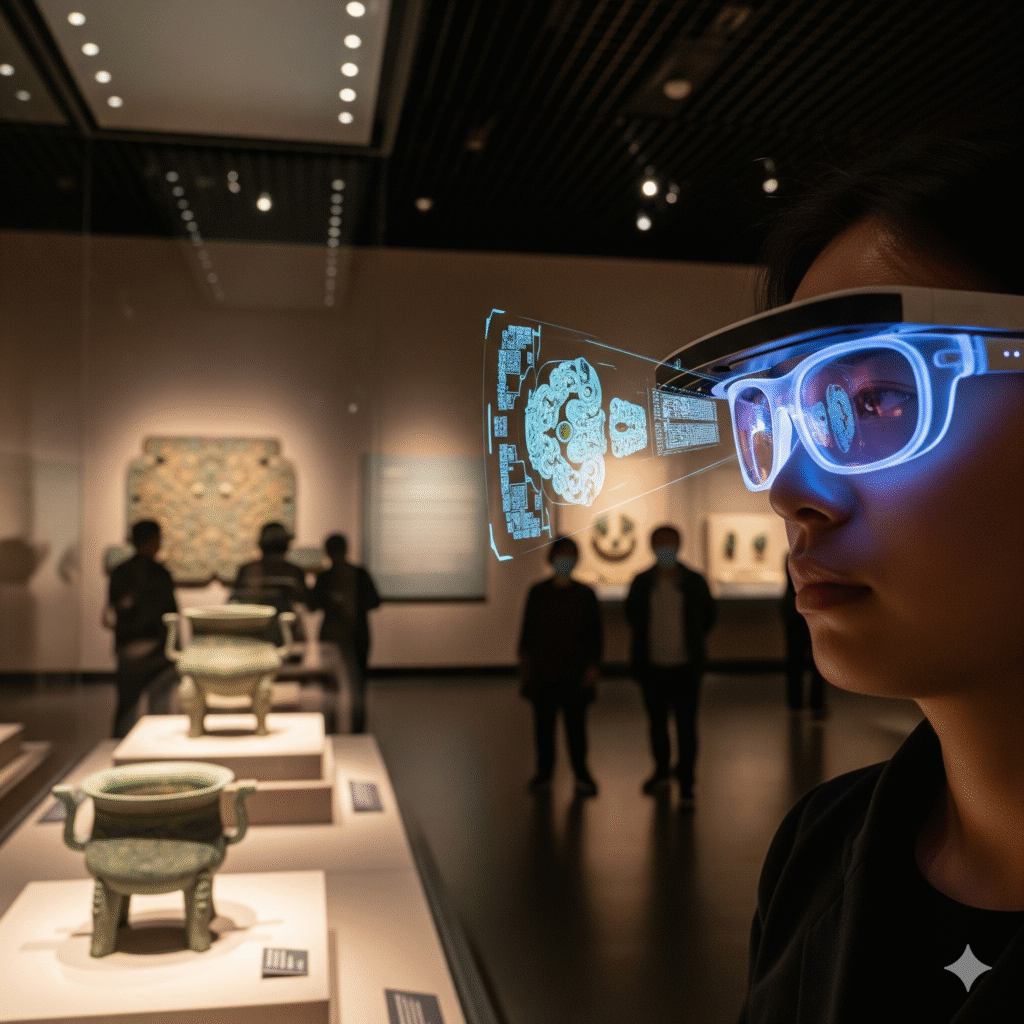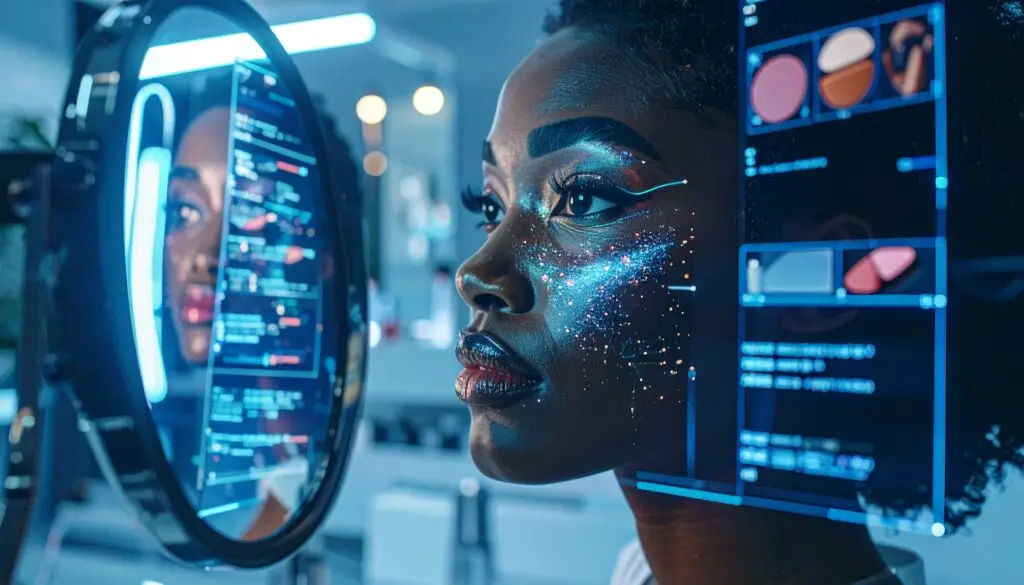Table of Contents
Introduction: CMOs at the Helm of Immersive Transformation
The marketing landscape in Asia Pacific (APAC) is evolving at breakneck speed, driven by mobile-first consumers, super-app ecosystems, and digital natives who demand seamless, engaging brand experiences. For Chief Marketing Officers (CMOs) and digital marketers, the challenge is no longer just about crafting campaigns or optimizing funnels. It’s about creating immersive, multisensory ecosystems that blend physical and digital worlds. Welcome to Marketing 6.0, a transformative framework introduced by Philip Kotler and his co-authors in Marketing 6.0: The Future Is Immersive, where brands don’t just connect with consumers, they become part of their lives.
In APAC, this shift is particularly urgent. The region is home to over 60% of the world’s Gen Z and a fast-growing Gen Alpha population, both of whom expect brands to deliver personalized, phygital (physical plus digital) experiences that are as authentic as they are innovative. From Alibaba’s Singles’ Day livestream spectacles to Grab’s all-in-one super-app ecosystem, APAC is the global epicenter of immersive marketing innovation.
This article, hosted on www.asiatechbuzz.com, is your comprehensive guide to mastering Marketing 6.0 in the APAC context. Designed for CMOs, digital marketers, CTOs, and tech managers, it unpacks Kotler’s framework, highlights cutting-edge technologies, and showcases real-world APAC examples that are redefining consumer engagement. Most importantly, it provides a practical playbook to help you lead in an era where immersion is not a luxury, it’s a necessity.
What is Marketing 6.0? Redefining the Marketing Paradigm
The Evolution of Marketing: From 1.0 to 6.0
Marketing has undergone seismic shifts over the decades, each phase reflecting changes in consumer expectations and technology:
- Marketing 1.0 (Product-Centric): Focused on functional benefits and mass production.
- Marketing 2.0 (Consumer-Centric): Emphasized segmentation, targeting, and positioning.
- Marketing 3.0 (Human-Centric): Prioritized values, purpose, and societal impact.
- Marketing 4.0 (Digital and Social): Integrated online and offline channels with engagement-driven strategies.
- Marketing 5.0 (Tech for Humanity): Leveraged AI, big data, and automation to enhance human experiences.
- Marketing 6.0 (Immersive): Merges physical and digital worlds into seamless, multisensory ecosystems.
Marketing 6.0 isn’t just an incremental step, it’s a complete redefinition of how brands engage. It moves beyond campaigns and channels to create living ecosystems where consumers experience brands in real-time, contextually relevant ways.
Why Marketing 6.0 Matters in APAC
In APAC, Marketing 6.0 is not a distant future, it’s happening now. The region’s mobile-first, app-driven culture and its massive population of immersive-native Gen Z and Gen Alpha consumers make it the ideal testing ground for this new era of marketing. Unlike traditional markets, APAC consumers have leapfrogged legacy systems, embracing smartphones and super-apps as their primary interaction points with brands. This creates a unique opportunity for CMOs to pioneer immersive strategies that set global benchmarks.
Why APAC is the Global Leader in Immersive Marketing
The Rise of Phygital-First Consumers
APAC consumers don’t just switch between physical and digital channels, they expect them to work as one. Whether it’s ordering groceries via Grab in Singapore, streaming K-pop concerts in virtual reality, or trying on makeup through AR mirrors in Seoul, the region’s consumers demand instant, seamless, and phygital-first experiences. This is driven by:
- Mobile Penetration: APAC accounts for over half of global smartphone users, with countries like South Korea and Singapore boasting near-universal adoption.
- Super-App Ecosystems: Platforms like WeChat, Grab, and Gojek integrate payments, shopping, and services into a single, immersive interface.
- Cultural Dynamism: APAC’s diversity fuels innovation, with brands tailoring experiences to local preferences while scaling globally.
Gen Z and Gen Alpha: The Immersive-Native Generations
APAC is home to audiences who:
- Seamlessly blend online and offline worlds.
- Engage deeply with gamified, AR-driven, and interactive content.
- Prioritize authenticity, sustainability, and cultural relevance alongside innovation.
For CMOs, this means Marketing 6.0 is not a choice, it’s a mandate to stay relevant in a region that’s setting the pace for global marketing trends.
Latest Trends in Immersive Marketing in APAC
To ground our discussion, here’s a snapshot of key trends shaping Marketing 6.0 in APAC, backed by verified statistics:
| Trend | Description | Statistics | Source |
|---|---|---|---|
| Live Commerce Growth | Livestream shopping is booming, blending entertainment and sales. | Livestream e-commerce in APAC is projected to reach $1.2 trillion by 2026. | McKinsey & Company |
| AR/VR Adoption | AR and VR are transforming retail and engagement. | 70% of APAC consumers are open to using AR for shopping by 2025. | Statista |
| Super-App Dominance | Super-apps integrate multiple services into one platform. | 80% of Southeast Asian consumers use super-apps daily. | Bain & Company |
| Sustainability Demand | Consumers prioritize eco-conscious brands. | 65% of APAC Gen Z prefer brands with sustainable practices. | NielsenIQ |
Core Principles of Marketing 6.0: The Metamarketing Revolution
Beyond Omnichannel: The Phygital Breakthrough
Traditional omnichannel strategies focus on consistency across touchpoints, but Marketing 6.0 introduces metamarketing, a seamless fusion of physical and digital experiences. Instead of treating channels as separate, metamarketing creates a unified journey where consumers move effortlessly between the two.
Example: L’Oréal’s AR-enabled mirrors in Singapore stores allow customers to try on makeup virtually while syncing product recommendations to their mobile app. The experience isn’t physical or digital, it’s phygital, delivering a cohesive brand interaction.
From Channels to Experiences
Marketing 6.0 shifts the focus from where to reach consumers to how they experience the brand. It’s about creating moments that feel alive, adaptive, and deeply personal. This requires CMOs to rethink traditional funnels and embrace immersive ecosystems that prioritize engagement and emotion over clicks.
Technology Powering Marketing 6.0 in APAC
AI and Data: Crafting Hyper-Relevant Journeys
Artificial intelligence (AI) is the backbone of Marketing 6.0, enabling brands to deliver hyper-personalized experiences at scale. In APAC, e-commerce giants like Lazada and Shopee use AI to analyze consumer behavior in real time, serving tailored product recommendations and dynamic pricing. For CMOs, AI unlocks the ability to:
- Predict consumer needs based on browsing and purchase history.
- Deliver real-time nudges that feel intuitive, not intrusive.
- Optimize campaigns for maximum relevance and ROI.
Example: Shopee’s AI-driven “Flash Deals” adapt to user preferences, increasing conversion rates by up to 20% in markets like Indonesia and Thailand.
AR and VR: Redefining Retail and Engagement
Augmented reality (AR) and virtual reality (VR) are transforming how APAC consumers interact with brands:
- Sephora SEA’s AR Mirrors: Shoppers can test makeup shades virtually, reducing purchase hesitation and boosting engagement.
- IKEA Place App (Singapore): Allows users to visualize furniture in their homes via AR, driving higher purchase confidence.
- Virtual K-Pop Concerts: Groups like BTS and Blackpink host VR concerts, creating immersive fan experiences that transcend geography.

These tools not only enhance engagement but also bridge the gap between online discovery and offline purchase.
Blockchain and Web3: Building Trust in a Digital World
Blockchain and Web3 technologies are redefining trust and ownership in marketing. In APAC, brands like DBS Bank in Singapore are experimenting with NFT-based loyalty programs, offering customers unique digital assets tied to real-world rewards. Blockchain ensures transparency, authenticity, and security, which are critical for building consumer trust in immersive ecosystems.
Marketing 6.0 in Action: APAC Success Stories
Alibaba’s Singles’ Day: The Ultimate Immersive Commerce Event
Alibaba’s Singles’ Day is more than a shopping event, it’s a cultural phenomenon that blends livestreaming, gamification, and celebrity-driven storytelling. In 2024, it generated over $100 billion in sales in 24 hours, leveraging:
- Livestream Commerce: Influencers showcase products in real-time, driving instant purchases.
- Gamified Experiences: Interactive games and challenges keep consumers engaged.
- Phygital Integration: Seamless transitions between online browsing and offline delivery.
For CMOs, Singles’ Day is a masterclass in turning commerce into an immersive, entertainment-driven ecosystem.
Grab and Gojek: Super-Apps as Phygital Ecosystems
Super-apps like Grab and Gojek have redefined convenience in Southeast Asia by integrating ride-hailing, payments, food delivery, and more into a single platform. Their success lies in:
- Unified Customer Journeys: Consumers can book a ride, order dinner, and pay bills without leaving the app.
- Data-Driven Personalization: AI tailors offers based on user behavior, increasing retention.
- Cultural Relevance: Localized features resonate with diverse APAC markets.
These platforms show how brands can own the entire consumer lifestyle, not just a transaction.
L’Oréal SEA: AR-Powered Beauty Experiences
L’Oréal has embraced Marketing 6.0 with AR-driven try-ons and phygital product launches. Its “Virtual Try-On” feature, available in stores and apps across SEA, allows consumers to experiment with makeup shades in real time. This not only enhances the shopping experience but also drives higher conversion rates by reducing purchase uncertainty.
K-Pop and Virtual Concerts: The Entertainment Frontier
K-pop giants like BTS and Blackpink are pioneering immersive entertainment with VR and AR concerts. These events create global fan communities by offering:
- Multisensory Experiences: Fans interact with virtual stages and avatars.
- Global Accessibility: VR concerts break geographical barriers, reaching audiences worldwide.
- Gamified Engagement: Interactive elements like fan voting and virtual meet-and-greets deepen loyalty.
This approach demonstrates how immersive marketing can turn entertainment into a global, participatory experience.
The Three-Layer Framework of Marketing 6.0
To operationalize Marketing 6.0, Kotler’s framework emphasizes three interconnected layers:
- Enablers (The Tech Stack): AI, AR/VR, IoT, and blockchain power immersive experiences.
- Environments (The Playgrounds): Phygital retail, spatial computing, and metaverse platforms create the spaces where consumers interact.
- Experiences (The Outcomes): Multisensory, gamified, and adaptive interactions deliver emotional and functional value.
This layered approach ensures CMOs move from tools to context to impactful consumer experiences.
Keeping It Human: Purpose and Sustainability in APAC
Why ESG and Authenticity Matter
APAC consumers, especially Gen Z and Gen Alpha, demand more than flashy tech, they want brands with purpose. According to NielsenIQ, 65% of APAC Gen Z prefer brands that prioritize sustainability and ethical practices. Immersive campaigns must align with these values to build lasting loyalty.
Example: Unilever’s campaigns in SEA highlight sustainable sourcing for products like Dove and Lipton, using AR to tell authentic stories about their supply chain. This blends immersion with purpose, resonating deeply with conscious consumers.
Building Trust in a Tech-Driven Landscape
Kotler emphasizes that technology alone doesn’t create loyalty, authenticity does. In APAC, where cultural nuances vary widely, brands must tailor immersive experiences to local values while maintaining global consistency. This balance of innovation and authenticity is the key to winning consumer trust.
The CMO Playbook: Actionable Steps for Marketing 6.0
To thrive in the age of immersion, CMOs and digital marketers in APAC can follow this practical playbook:
- Audit Your Customer Journey for Immersion Gaps
- Map every touchpoint and identify where experiences feel fragmented or outdated.
- Example: Are your e-commerce platforms integrated with in-store experiences, or do they operate in silos?
- Pilot Immersive Experiments in Mobile-First Markets
- Test AR campaigns, gamified loyalty programs, or VR experiences in high-growth markets like Indonesia, Thailand, or the Philippines.
- Example: Launch a gamified loyalty app that rewards users for engaging with your brand across physical and digital touchpoints.
- Build a Future-Proof Team
- Upskill your marketing and tech teams in AI, XR (extended reality), and immersive storytelling.
- Partner with tech providers to integrate cutting-edge tools without disrupting operations.
- Redefine Success Metrics
- Move beyond clicks and impressions to measure depth of engagement (e.g., time spent in AR experiences), loyalty (e.g., repeat purchases), and share of experience (e.g., brand presence in consumers’ daily lives).
- Embed Purpose and Sustainability
- Align immersive campaigns with ESG goals to resonate with APAC’s conscious consumers.
- Example: Use VR to showcase your brand’s sustainability efforts, like eco-friendly manufacturing processes.
This playbook isn’t about one-off campaigns, it’s about transforming your organization into an immersive, consumer-centric powerhouse.
Conclusion: Lead the Immersive Revolution or Risk Falling Behind
Marketing 6.0 is not a trend, it’s a seismic shift that’s already reshaping the APAC marketing landscape. With its mobile-first consumers, super-app ecosystems, and innovation-driven markets, APAC is the global proving ground for immersive, phygital-first strategies. For CMOs and digital marketers, this is a call to action: lead the revolution or risk being outpaced.
Philip Kotler’s Marketing 6.0: The Future Is Immersive challenges us to rethink marketing as an ecosystem of experiences, not a series of campaigns. By leveraging AI, AR, VR, blockchain, and data-driven personalization, brands can create seamless, multisensory journeys that resonate with APAC’s diverse, digital-native audiences. But technology is only half the equation, authenticity, cultural relevance, and sustainability are what make these experiences stick.
At www.asiatechbuzz.com, we believe the future of marketing belongs to brands that stop selling to consumers and start co-creating with them. In APAC’s dynamic, digitally fearless markets, Marketing 6.0 is already here. The question is: will you lead the charge?
Frequently Asked Questions (FAQs) on Marketing 6.0 in APAC
What exactly is Marketing 6.0, and how does it differ from earlier marketing versions?
Marketing 6.0 is all about creating immersive, seamless experiences that blend the physical and digital worlds—think phygital ecosystems where consumers don’t just interact with brands but live within them. It builds on Kotler’s previous eras: from product-focused (1.0) to consumer-centric (2.0), human values (3.0), digital integration (4.0), and tech-for-good (5.0). The big shift here is from channels to full-on metamarketing, emphasizing multisensory engagement over traditional campaigns. As Kotler explains in his book, it’s about evolving with consumer behavior in a tech-driven world. For APAC marketers, this means leveraging super-apps and AR to make brands feel like natural extensions of daily life.
Why is APAC leading the way in Marketing 6.0 innovations?
APAC’s edge comes from its massive Gen Z and Gen Alpha populations—over 60% of the global total—who are digital natives craving phygital experiences. The region’s mobile-first culture, with super-apps like Grab and WeChat dominating everyday tasks, has leapfrogged traditional marketing. Places like China and Southeast Asia are hotspots for immersive commerce, from Alibaba’s livestream events to AR retail trials. It’s not just tech; cultural diversity fuels rapid adoption, making APAC a global testing ground for strategies that could scale worldwide. If you’re a CMO here, tapping into this means staying ahead in a market that’s already immersive by default.
What are the key technologies powering Marketing 6.0 in APAC?
The core tech stack includes AI for hyper-personalization, AR/VR for interactive experiences, blockchain for trust in digital interactions, and IoT for seamless phygital connections. In APAC, e-commerce platforms like Shopee use AI to tailor deals in real time, while brands like L’Oréal deploy AR mirrors for virtual try-ons. These tools create adaptive ecosystems that go beyond omnichannel, focusing on real-time engagement. Kotler’s vision highlights how they integrate to enhance human experiences, not replace them. For tech managers, starting with pilots in mobile-heavy markets like Indonesia can yield quick wins.
How can CMOs start implementing Marketing 6.0 strategies today?
Begin with an audit of your customer journeys to spot immersion gaps, then pilot small experiments like AR campaigns or gamified apps in high-growth APAC spots. Build teams skilled in XR and AI, redefine metrics around engagement depth (not just clicks), and weave in purpose like sustainability. It’s a shift from one-off tactics to ongoing ecosystems—co-creating with consumers rather than pushing at them. Resources like Kotler’s book offer a solid playbook for this transformation. At www.asiatechbuzz.com, we recommend focusing on phygital touchpoints to make your brand indispensable in consumers’ lives.
Does sustainability fit into Marketing 6.0, especially in APAC?
Absolutely—it’s essential. APAC consumers, particularly younger generations, demand brands that align with ESG values, with 65% of Gen Z favoring sustainable practices. Marketing 6.0 integrates this by using immersive tech to tell authentic stories, like AR experiences showcasing ethical sourcing. Kotler stresses that tech alone won’t build loyalty; it needs purpose to resonate culturally. In diverse markets like APAC, this means tailoring strategies to local values while scaling globally. For marketing pros, embedding sustainability turns immersion into trust-building, future-proofing your brand against evolving expectations.










